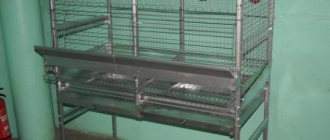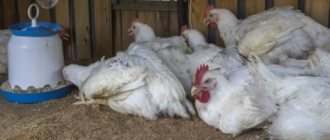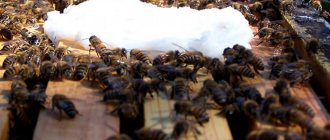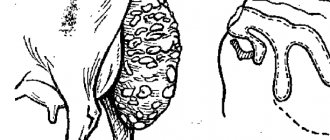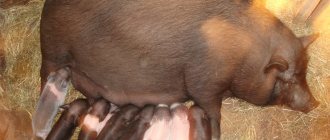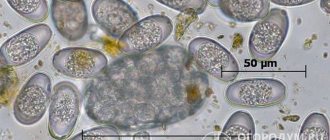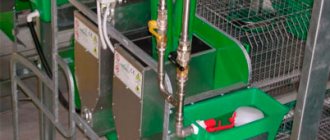Why is disinfection necessary?
Bacteria, viruses, fungi are common and extremely resilient microorganisms that cause various diseases. Many rabbits, especially young ones, die due to infections. Moreover, if mortality has already begun, it is often impossible to save the animals. This is a serious blow to business, because the entire livestock may die.
Rabbit farms must be disinfected after death, because germs remain. Although it is better not to lead to tragedies and make the procedure familiar.
Microorganisms are removed using special methods. If you make a mistake, the pests will again attack rabbits or other animals or people. Many germs are dangerous for many months and years. They are not afraid:
- regular washing, water;
- low temperature;
- chemistry, or get used to it.
Pathogens can choose a variety of objects: rabbit cages, rooms, bedding, feeders, etc. On large farms, microbes are killed twice a year or more often.
Plus, such processing of cells and other things is carried out unscheduled:
- in preparation for childbirth;
- due to the transplantation of new rabbits, young animals;
- after illness;
- in an unfavorable epidemiological situation in the region.
Some tips
When you start disinfecting at home, it is very important to take all precautions when working with solutions of chemical origin. To do this, you should adhere to several rules, namely:
- Perform all work only in special clothing, which must be washed after this procedure;
- before starting disinfection, do not forget to wear safety glasses and a respirator to protect your eyesight and respiratory system;
- If you plan to use an aerosol type of disinfection, then it can only be carried out in a gas mask, and you must purchase a special neutralizer.
Many diseases that can cause the death of the entire livestock are endowed with high survival rates. Such bacteria can develop even several months after the enclosure is infected.
It is for this reason that the disinfectant is selected very carefully, and the treatment itself is carried out as carefully as possible. Do not forget that curing animals is much more difficult and financially more expensive than properly treating a rabbit’s habitat.
How to disinfect rabbit cages
They treat the animals' homes, premises and equipment with special means. Several methods are used at home:
- Chemicals are used. Strong antiseptics and so on are used for washing.
- Spray chemicals in the form of aerosols.
- Construction hairdryer.
- Karcher car wash.
- They burn. As a rule, they take a gas burner or a blowtorch.
These methods are proven and effective, but do not guarantee results. Everyone has strengths. For example, chemicals are used against staphylococci: formaldehyde, damp, chloramine. For greater efficiency, the methods are combined and used in turn.
A combination of chlorination and roasting is considered successful. From chemistry, as a rule, the following is taken:
- Virosan. Broad spectrum drug: effective against viruses, bacteria, fungi. Lasts for a long time, no need to rinse off.
- Xylonaft. Heated to at least +70 °C is more effective. Used for the prevention and treatment of rabbits. In the latter case, the concentration is higher (5%).
- Bromosept-50. Many microbes are afraid of even small doses of the drug. The product is not dangerous for people and rabbits.
- Ecocide C. Powder that is dissolved in water and sprayed.
- free creolin is effective against staphylococci and E. coli.
- Lacto pH, Aquasafe and similar preparations. They contain lactic, propionic, and malic acids. With the help of these products it is convenient to wash drinking bowls and water supply systems.
- True friend. Suitable for decorative rabbits. Removes bacteria and odor. It is not necessary to rinse off.
All products for processing rabbit hutches and equipment are used according to the instructions. Preference is given to drugs that are easy to use and relatively safe for humans and animals.
Bromosept
Ecocide
Creolin
Virosan
Popular means
Well-known chemicals have good disinfecting properties.
- Ash lye. To prepare, take wood ash, mix it with water in a ratio of 1:3, and boil for half an hour. Used hot. They can be used to treat the cage in the presence of a rabbit. Equipment and drinking bowls are treated by immersion in lye.
- Bleaching powder. 10-20% solutions are prepared from it. To do this, first dissolve 1-2 kg of bleach in 1 liter of water, then add it to 10 liters and leave for 1 day. The resulting solution is filtered. Chlorine-lime milk is prepared in the same way, but is used immediately after preparation. In powder form, lime is used for biothermal disinfection of animal waste products.
- Formaldehyde. A 1-4% solution of the product completely disinfects cell surfaces. For aerosol treatment of rabbitry, a 36-40% formaldehyde solution is used. It is sprayed and the room is left closed. Exposure time is 6 hours at the rate of 10 ml per 1 m3 and 24 hours at the rate of 20 ml per 1 m3. The remaining substances are neutralized with ammonia.
- Whiteness is used in the form of an aqueous solution in a ratio of 1:10.
- Burnt lime. Before use, it is quenched: 1 kg of lime is stirred to obtain a powdery mass (fluff) in 1 liter of water. Then add 9 liters of water - you get 10% lime milk. Before use, it retains its disinfecting properties for 6 hours.
- Chloramine. This is a white powder. Dissolve in warm water and store for up to 2 weeks. After treatment, the surface is rinsed with water.
The composition of disinfectants includes well-known substances
In addition to these substances, iodine is used (25 ml of 5% iodine per 1 liter of water), 2% formalin solution, 3% caustic soda, or caustic soda (at a temperature of 70 ° C). Chemically active substances (alkalis, acids), as well as water, have a negative effect on the metal parts of rabbit houses, so it is recommended to add 2% sodium metasilicate (liquid glass) to disinfection solutions.
Firing with fire using a blowtorch or gas torch is very effective: any infection is killed. The procedure lasts several minutes, so any cells, including wooden ones, are treated. Contact with plastic, plywood, glass, and ceramics is not allowed.
When fighting infections, firing with fire using a blowtorch or gas torch is effective.
Preparation for the procedure
To properly disinfect equipment and inventory, preliminary work is needed. They do the following:
- The rabbits are briefly transplanted into other cages, enclosures, or rooms.
- In the treated cages, remove and disconnect the feeders and drinkers, if the design allows this.
- Remove the litter. They use a dustpan, brushes, and a broom. Waste and bedding are not left near the cage, but placed in a bag and disposed of.
- Use disinfection for minor repairs. At the same time, they find and eliminate breakdowns.
- They wash the cages and stuff. It is convenient to use a hot water hose. Where it is difficult to wash, use a stiff brush. Thoroughly scrub every corner. Don't forget to wash the outside of the cages.
- Wipe again. Any detergent is suitable.
- Allow to dry. It is good if it is possible to dry the equipment and cages in direct sunlight.
Such preparation is required. When done conscientiously, the microbial population is reduced by about 40%.
Burning cells with a blowtorch.
But the most effective means that instantly kills all infection in cells is fire. For safety reasons, it is necessary to remove all flammable items (fuels and lubricants, hay, fluff, feeders, drinking bowls, building materials, rags, etc.) from the cages and the surrounding area. Combined with thorough cleaning and chlorination, this is a one hundred percent guarantee of the cleanliness of your cells:
All these procedures (cleaning, washing and drying) would be impossible or very difficult if free access to all corners of the cells were not provided. Imagine a cage with one small door, into which both a dustpan and a broom can hardly fit. I think that the experience with Boris's cages opening from above will also be useful. Dear colleague, if you would like to share your experience, write through the feedback system in the comments to the article or on social networks through the “Contacts” section.
Please share this article with your friends on social networks:
Please rate the article. Ask a question, discuss on the forum.
How to disinfect rabbit cages
After washing and drying, the main work is carried out. Features depend on the disinfection method. For example, when firing with a blowtorch, proceed as follows:
- Remove flammable items. Wooden and metal cages are suitable for firing. Glass, slate, plastic, ceramics are afraid of fire. For cells with such parts, a different method is chosen. Sometimes some elements are removed and treated with boiling water.
- They pass with fire first from the inside. They try to ensure that the stream is uniform and lingers in each small area for about two minutes. The tree turns brown.
- The outside of rabbit cages is also burned.
- Leave to cool.
- They burn objects, the room.
Other methods of disinfection:
- They work with Karcher slowly. Particular attention is paid to joints. The steam should end up in hard-to-reach places.
- Spray with chemicals or wash thoroughly with solutions. Ventilate. Products such as Lacto pH are supplied using special dispensers or passed through summer water pipes.
- The jet from a hair dryer also penetrates the joints well. For hard-to-reach places, this tool is better than a blowtorch. Although the latter is considered more effective against microbes.
After processing, cooling and airing, they put everything in its place: feeders, bedding, etc. The rabbits are returning home.
Sometimes you have to process the cells together with the animals. In these cases, chemical solutions are used. Moreover, the funds must be safe. Suitable, for example, is lactate (lactic acid) at a concentration of 20–25%.
Cleaning a rabbit's cage - quickly and efficiently
20/09/2016, 15:00
Cleaning a rabbit's hutch isn't the most enjoyable task, but you can make it as easy as possible. If you stick to a strict schedule, cleaning your pet's cage will become just one of your daily chores, no more difficult than all the other chores.
There are no hard and fast rules for how often you should clean a rabbit's hutch. However, cleaning a little every day will help keep your pet's home clean. “General cleaning” of the cage should be done at least once a week. However, if your rabbit is not litter box trained or the cage is not too large, more frequent cleaning will be needed. The same goes for a cage with several rabbits - it needs to be thoroughly cleaned several times a week.
Daily Cleaning Remove all uneaten fresh food (greens, vegetables, etc.) from the cage. It is best to do this twice a day: morning and evening. Remove hay from the floor of the cage. If you don't use a hay box, at least remove the wet and stained hay.
Wash the feeders and water bowl and give the rabbit fresh water.
Clean up minor messes by wiping up spills or feces outside the tray. These steps will make weekly cage cleaning much easier.
The litter box should also be checked and cleaned on a daily basis. This is also important because it makes it possible to observe the rabbit’s stool and notice deviations in time that indicate health problems. However, how often you change the litter and clean the litter box largely depends on what type of litter you use and how much you use. If there is a thin layer of litter in the tray, the tray must be cleaned daily. If the filler layer is thicker, you can limit yourself to cleaning once every three days. Vinegar is an excellent litter cleaner because it dissolves calcium deposits caused by pet urine.
Weekly Cleaning Remove all accessories from the cage and remove all bedding.
Wipe the cage thoroughly with hot water and vinegar. If your pet's cage is small, you can disassemble it and wash it in the bathroom.
Wash the feeders, water bowl, hay box and tray with hot water. Clean all dirty toys and accessories.
The cage must be disinfected periodically, but any product must be thoroughly rinsed off. Do not use disinfectants to clean wooden cages (wood absorbs chemicals). To clean a metal cage, you can use a 10% bleach solution. You can soak all the accessories in it for about half an hour, but don’t forget to rinse them very thoroughly!
Recommendations
Vinegar is an excellent product for cleaning a rabbit's cage, and especially the litter box. Rodent urine contains calcium salts, which harden and accumulate on the floor of the cage and in the tray. Vinegar dissolves them very effectively. Keep vinegar in a spray bottle for quick cleaning of the litter box and dirty parts of the cage. Especially “stubborn” deposits can be poured with vinegar and allowed to stand for 10-20 minutes.
If your rabbit is litter box trained and you use high-quality litter, cleaning the cage will be much easier and more enjoyable. The same goes for the bedding material - it should absorb moisture well. When choosing a cage, think about how easy it will be to clean. Wooden surfaces absorb urine and are very difficult to clean.
If a rabbit is spayed or neutered, he does not mark the cage and this also makes cleaning easier.
Do not wash accessories and the tray in the kitchen sink - it is better to use the bathroom sink or the bathtub itself, and then disinfect them.
Plan cleaning in advance at a time convenient for you, and then stick to the schedule without postponing this task until later.
Disinfection after illness
Treatment depends on the timing and purpose of the procedure. Disinfection after illness has its own peculiarities. For example, after myxomatosis, rabbit cells are cleaned and treated with a special composition, for example, a 10–20% bleach solution. Disinfect 2-3 times. There is a 3 hour wait before each new entry. After 2 weeks, before moving the rabbits, the procedure is repeated again.
In other cases, the choice of remedy depends on the disease:
- Staphylococcosis. Formaldehyde 4% is suitable for disinfection. Sometimes its aerosol is used in a concentration of 20%.
- Listeriosis. The same product is suitable in aerosol form.
- Salmonellosis. It is recommended to use Xylonaft 2.5%.
- Pasteurellosis. The most commonly used is formaldehyde 1%.
- Dermatomycosis. A combination of sodium hydroxide (1%) and formaldehyde (3%). The solution is heated to +50 °C. They pass twice, every other day.
How to treat rabbit cages at home?
To treat cells, you can use available folk remedies that have been used for decades. Here are the most popular ones:
- lime;
- white solution;
- firing by fire;
- Lye treatment.
Once you have chosen the optimal method for processing the cell, you can begin the process itself. These products have proven themselves to be the best, so don’t worry too much about disinfection. To find out exactly how to carry out this procedure, experienced breeders recommend watching the video.
Rabbit cages must be disinfected regularly
However, you can also buy preparations for disinfection. Today there are many effective means, namely:
- Glutex;
- Ecocide C;
- iodine solution in alcohol;
- Virocide;
- Virosan;
- Phenolic-free creolin, Bromosept and other drugs.
It is also important to carry out the treatment procedure after the death of furry animals. Methods and preparations for disinfection depend on the type of disease. Depending on the disease that has affected the animals, the rabbit breeder should familiarize himself with the recommendations of the veterinarian.
Video about treating rabbit cages with white:
Treating rabbit cages
, video, photo of the process - those aspects that novice farmers are actively interested in. After all, they strive to protect the livestock, minimize risks, and preserve the health of the animals they keep at home. The tips from the article will certainly help you be successful in this area of farming. Continue reading on the website fermeru.pro.
Disinfection after death
Myxomatosis and VGBV are especially dangerous for rabbits. They lead to the death of up to 100% of animals. If there is a threat of disease, rabbit cages and equipment are disinfected once every 10 days for preventive purposes. This is necessary if there is an outbreak or epidemic nearby in the region.
After the death of rabbits, disinfection is mandatory. Without it, there is no point in continuing work. Otherwise, microbes will constantly destroy rabbits.
Small objects are not processed - drinking bowls and bedding are burned. Before disinfection, the cells of dead animals are first cleaned with hot caustic soda 2%, then treated with a basic solution, for example, Lysol 6%.
After two weeks, the animals can be reintroduced. The time depends on the specific microbes. Proper disinfection of rabbit cages, premises, and objects helps to continue business.
Danger and consequences of myxomatosis
Myxomatosis is a dangerous viral disease characterized by purulent conjunctivitis and the formation of tumors. The virus belongs to the category of deadly diseases.
However, if you take timely measures to eliminate the symptoms that appear, you can save most of the farmed livestock. An important role in the fight against myxomatosis is played by preventive measures, including disinfection with special means on all surfaces of rabbit cages.
Timely vaccination of rabbits is the key to preventing the negative consequences of the disease. It makes sense to vaccinate exclusively healthy rabbits, since it simply will not work on sick individuals.
A sick rabbit can be recognized by obvious signs:
- swollen skin in the eye area;
- swelling of mucous tissues;
- copious purulent discharge through the nose;
- the appearance of blisters all over the body.
The incubation period of the disease usually ranges from five days to two weeks. It all depends on the strain.
An interesting feature of myxomatosis can also be identified: the mortality rate among adult livestock is much higher than that of young animals. Rabbits aged one to two months have every chance of successful treatment, and therefore survival. It is also worth noting that growing children suffer from the disease much less frequently.
Myxomatosis occurs in two forms:
- Edema.
- Nodular.
Myxomatosis in the form of edema is the most rapid and difficult to tolerate form for rabbits. In addition, the edematous form is practically untreatable. An individual suffering from a virus in this form refuses to eat and is practically inactive.
Signs of edematous myxomatosis are:
- the presence of watery bumps throughout the body;
- characteristic wheezing when breathing;
- purulent discharge.
The death of such an animal occurs after 8-10 days. The bodies of dead animals should be burned, not subjected to standard burial in the ground, and not used in meat production. If a sick rabbit is identified, it should be immediately separated from the rest of the animals and the room should be disinfected. It is necessary to carry out quarantine, as well as associated vaccination with VGBV.
When determining the nodular type of myxomatosis, the chances of survival of individuals increase, since this form is considered the most easily tolerated. The percentage of surviving livestock is about 50% of all affected rabbits. The main symptoms of myxomatosis nodosa are small bumps on the body.
Such characteristic nodes are usually located on the ears and around the eyes. This type of disease is accompanied by manifestations of purulent conjunctivitis. Nodular myxomatosis lasts 1-1.5 months. With a properly planned approach to treatment, a sick rabbit will recover and survive. The only trace left after the disease are small scars all over the rabbit’s body.
Other effective methods of disinfection
In addition to veterinary and professional remedies, there are also simpler ones. They are affordable and also effective. The following are suitable for disinfecting rabbit cages:
- Soda ash 2%. Dilute in hot water. Leave everything disinfected for 30 minutes, then wash off. A solution of soda ash is convenient for treating not only cells, but also small objects.
- White. Contains chlorine. The product is diluted with water at the rate of 1:10. The solution is popular among rabbit breeders.
- Ash lye. Wood ash is thrown into water and stirred. The proportion is 1:3. Cook for half an hour. Apply the solution hot. Small objects are immersed in ash lye. The product is considered safe, so you can leave rabbits in cages during treatment.
- Iodine 5%. Prepare a solution - take 25 ml of the drug per liter of water. Can be washed or sprayed. Leave the cells and treated items for an hour. Then they wash and dry.
- Bleaching powder. Bleach is dissolved in water at the rate of 1 or 2 kg per 1 liter. Then always add 10 liters of water and leave for 24 hours. Filtered.
- Burnt lime. Lime is mixed in water: 1 kg in 1 liter. Add another 9 liters. The result is milk of lime at a concentration of 10%. The product kills germs within 6 hours after preparation. Further properties are lost.
Iodine 5%
Soda ash
White
Bleaching powder
There are other methods and methods of disinfection. If the composition contains acids, alkalis, even ordinary water, the metal parts of the cells are gradually destroyed. For protection, sodium metasilicate 2% (liquid glass) is sometimes added.
Disinfection of cages, premises and equipment is a common procedure for a rabbit breeder. This is an important job to help prevent infection in the livestock. It is important to choose the right method and follow the instructions.
Substances and preparations for treatment
The most popular disinfectant is bleach. For disinfection, use its 10% solution. Apply it to the equipment, walls of the rabbitry and cages with a wide, elastic brush. Self-prepared ash lye is excellent at fighting pathogenic microbes. To obtain this product, wood ash, in a ratio of 1:3 with water, is boiled for half an hour. After this, the suspension is filtered through cheesecloth and brought to a boil again. The resulting lye is soapy to the touch, slightly yellowish in color, almost transparent. It is safe for animals, but is good at destroying pathogens. They disinfect the cage, drinking bowl, and equipment. To be effective, the lye must be hot, the solution must completely cover the surface and penetrate into all gaps.
At home and on farms, disinfection is carried out by spraying rooms and cells with a 2% formaldehyde solution.
Regular white works great too. It is disinfected with a 1:10 solution, after which the cells are washed. You can use Domestos - after treatment and exposure, it must be washed off and the cells dried thoroughly.
It must be remembered that alkalis spoil the metal parts of the cells, acids destroy the cement floor. If disinfection is carried out with means dangerous to animals and humans, the rabbits are taken to a safe place and used personal protective equipment.
Veterinary drugs
Veterinary pharmacology also offers various effective means for disinfection:
- Virosan,
- Phenolic free coal creolin,
- PVP iodine spray,
- Ecocide and others.
Glutex is an emerald green aromatic solution that has bactericidal, fungicidal, and virucidal effects. The effect on the environment is defined as moderately toxic, is not an allergen, does not cause corrosion of metals, and does not corrode fabrics. Remains active for several days. Used for preventive and forced disinfection. Can be used for spraying, washing and irrigation. The applied product is left for exposure, then washed off, the surfaces are dried, and the rooms are ventilated.
Delegol is a complex preparation for cleansing, disinfection, and deodorization. Depending on the concentration, it can be used for regular cleaning and disinfection. Viruses, bacteria, and fungi are sensitive to it.
Iodine monochloride has a confirmed antiviral effect. They successfully disinfect entire farms and individual cells. An aqueous solution of this veterinary drug is prepared immediately before treatment. Apply the drug once or twice. For severe infections, the exposure time can be 5 hours.
Treatment of cages for decorative rabbits kept in an apartment
A decorative rabbit is a relatively clean animal, but its cage also needs daily cleaning and regular disinfection. “True Friend” is a safe cleaning, disinfectant and deodorizing agent for pets. You can treat cages and carriers. Removes dirt and odors, contains a bactericidal component - triclosan. It has a pleasant smell and does not cause allergies. There is no need to rinse off the product.
A domestic rabbit cage can be treated with regular iodine by preparing a solution of 25 ml of the drug in 1 liter of water.
A simple but effective disinfectant is vinegar with water in a ratio of one part to four.


